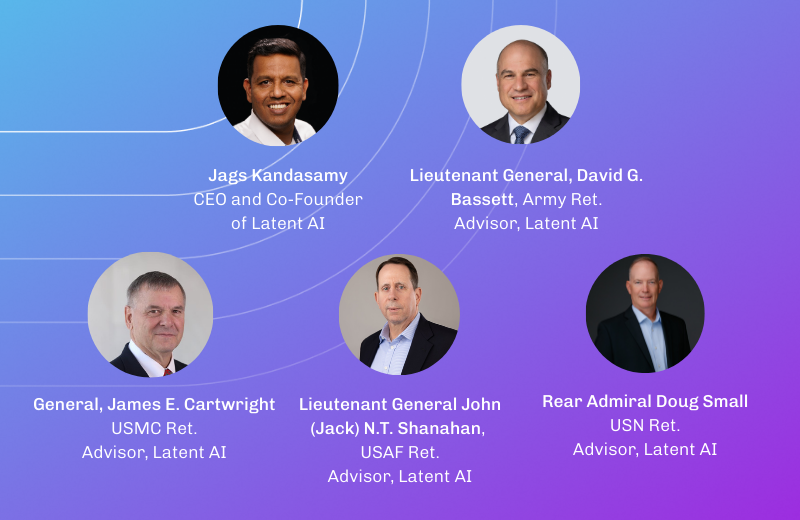What is agentic AI, and how does it support edge MLOps?
In today’s fast-paced world, deploying artificial intelligence (AI) at the edge—on devices like IoT sensors, smartphones, and embedded systems—unlocks real-time decision-making without the latency of cloud communication. However, managing machine learning (ML) models in these distributed, resource-constrained environments poses significant challenges. From scalability to model optimization, deploying ML at the edge demands a new approach to streamline workflows and deliver business value. Enter agentic AI, a game-changer that empowers organizations to overcome edge MLOps hurdles with autonomy, intelligence, and efficiency. In this blog, we explore how agentic AI transforms edge MLOps, making AI deployment at the edge faster, smarter, and more scalable.
The challenges of edge MLOps
Edge MLOps, the practice of developing, deploying, and monitoring ML models on edge devices, inherits the principles of MLOps but faces unique obstacles due to the distributed and constrained nature of edge environments. These include:
- Scalability and fleet management: Managing hundreds or thousands of edge devices, each with distinct hardware and intermittent connectivity, is a logistical nightmare. Traditional cloud-centric MLOps struggles to deploy updates, monitor performance, or maintain consistency across such a diverse fleet.
- Resource constraints: Edge devices, from low-power IoT sensors to embedded GPUs, have limited CPU, memory, and battery resources. Developers often need deep hardware expertise to tailor models to these constraints, slowing deployment timelines.
- Model optimization and footprint: Complex ML models built for the cloud are too resource-intensive for edge devices. Optimizing models through techniques like quantization and pruning is time-consuming and requires balancing accuracy with size—a process that’s often manual and error-prone.
- Orchestration and maintenance: Coordinating updates, A/B testing, or rollbacks across distributed edge nodes is cumbersome. Without automation, monitoring for accuracy drift or failures becomes inconsistent, leading to unreliable models in the field.
These pain points make edge AI deployments slower, riskier, and more expensive, stalling projects and frustrating decision-makers. To address these challenges, organizations need a solution that abstracts complexity and automates workflows—enter agentic AI.
Understanding edge MLOps: From DevOps to MLOps to edge MLOps
To appreciate agentic AI’s role, let’s briefly trace the evolution of edge MLOps. DevOps, pioneered in the late 2000s, revolutionized software delivery by combining development and operations through practices like continuous integration/continuous deployment (CI/CD), automation, and infrastructure as code. This foundation inspired MLOps, which emerged in the mid-2010s to address the unique needs of ML workflows, such as data versioning, experiment tracking, and model retraining.
Edge MLOps takes this further, specializing MLOps for edge devices by tackling constraints like limited compute, intermittent connectivity, and the need for lightweight models. Core components include:
- Data management: Automating pipelines for data versioning and quality.
- Model development: Tracking experiments and ensuring reproducibility.
- Deployment: Streamlining model deployment via containers or APIs.
- Monitoring: Detecting performance drift and anomalies.
- Governance: Ensuring compliance, security, and fairness.
While MLOps tools like MLflow, Kubeflow, and Airflow have made ML production-ready, edge MLOps requires additional intelligence to handle distributed fleets and resource scarcity. This is where agentic AI shines.
Defining agentic AI
Before we can appreciate how agentic AI streamlines AI deployments at the edge, we need to understand what it is and how it differs from related concepts.
Agentic AI refers to AI systems that act autonomously, make decisions, and pursue goals with minimal human intervention. Unlike simpler systems, agentic AI exhibits high-level agency, proactively planning, reasoning, and adapting to dynamic conditions. Key characteristics include:
- Autonomy: Operates independently to achieve user-defined goals.
- Proactivity: Anticipates needs and initiates actions without prompts.
- Reasoning: Uses planning and decision-making to navigate tasks.
- Tool Use: Interacts with external systems, like APIs or devices.
- Adaptability: Adjusts strategies based on feedback or changes.
Comparing agentic AI and generative AI
Agentic AI is often confused with generative AI due to their advanced capabilities, but they serve distinct purposes.
- Purpose: Agentic AI drives autonomous actions and task execution, interacting with environments to achieve goals. Generative AI creates content, like text or images, based on user prompts.
- Autonomy: Agentic AI proactively initiates and adapts, while generative AI reacts to inputs, lacking independent goal pursuit.
- Use Cases: Agentic AI automates workflows (e.g., managing edge fleets), while generative AI excels in creative tasks (e.g., generating marketing copy).
Agentic AI vs. traditional agents
Agentic AI also differs from traditional agents, a broader category in AI and computing.
- Scope: Traditional agents range from simple reactive systems (e.g., a thermostat) to complex ones (e.g., chatbots), but often lack advanced autonomy. Agentic AI focuses on high-level, goal-directed autonomy and reasoning.
- Proactivity: Traditional agents react to triggers, while agentic AI anticipates and initiates actions, ideal for dynamic edge environments.
- Use Cases: Traditional agents handle task-specific roles (e.g., scripted bots), while agentic AI manages complex tasks like autonomous fleet coordination.
Agentic behavior in AI models
What does agentic mean in practice? In practice, agentic AI behaves like an intelligent assistant that not only understands tasks but also takes initiative to complete them. It breaks down complex objectives into actionable steps, leverages external resources, and adapts to unexpected changes. Unlike traditional ML models or generative AI, which follow predefined logic or respond to prompts, agentic AI exhibits goal-directed behavior with a degree of self-governance.
Examples of agentic behavior:
- Smart factory management: Agentic AI can monitor production lines via edge sensors, detect inefficiencies, and autonomously adjust machine settings or schedule maintenance, optimizing for energy and output.
- Autonomous fleet coordination: In a delivery network, agentic AI can manage a fleet of drones, plan routes, adapt to weather changes, and deploy model updates to edge devices, ensuring real-time efficiency.
- Healthcare IoT: An agentic AI on wearable devices can track patient vitals, predict health risks, and proactively alert medical teams or adjust treatment plans, operating within edge constraints.
- Edge code optimization: An agentic AI, like an advanced version of GitHub Copilot or Devin, can autonomously write and debug code for edge devices, reasoning through hardware constraints to produce lightweight, efficient models, and adapt to project changes without constant developer input.
These examples highlight how agentic AI’s autonomy and reasoning make it uniquely suited to tackle the dynamic, distributed nature of edge MLOps, unlike generative AI or simpler edge ML models, which lack such proactive capabilities.
The role of agentic systems in edge MLOps
AI agents are revolutionizing edge MLOps by simplifying complex workflows. These intelligent orchestrators automate critical tasks, streamlining the deployment and model maintenance process:
- Model selection and optimization: AI agents recommend the best AI models tailored to specific edge hardware and performance needs.
- Compilation and deployment: They automatically compile and ship models, ensuring compatibility across diverse edge hardware.
- Monitoring and maintenance: Agents seamlessly monitor model performance, detect drift, and trigger retraining or redeployment.
By leveraging AI agents, enterprises reduce manual effort, accelerate time-to-market, and maintain a competitive edge in edge MLOps.
Conclusion
Agentic AI is transforming edge MLOps by addressing the unique challenges of deploying and managing ML models on resource-constrained, distributed edge devices. Through its autonomy, proactivity, and advanced reasoning, agentic AI streamlines critical workflows—such as model optimization, fleet management, and performance monitoring—reducing complexity and accelerating deployment timelines. By automating tasks that traditionally require deep expertise and manual intervention, agentic AI empowers organizations to scale edge AI seamlessly, ensuring faster, smarter, and more reliable solutions. As edge computing continues to grow, agentic AI will be the cornerstone of efficient, scalable, and intelligent MLOps, unlocking the full potential of real-time AI at the edge.





